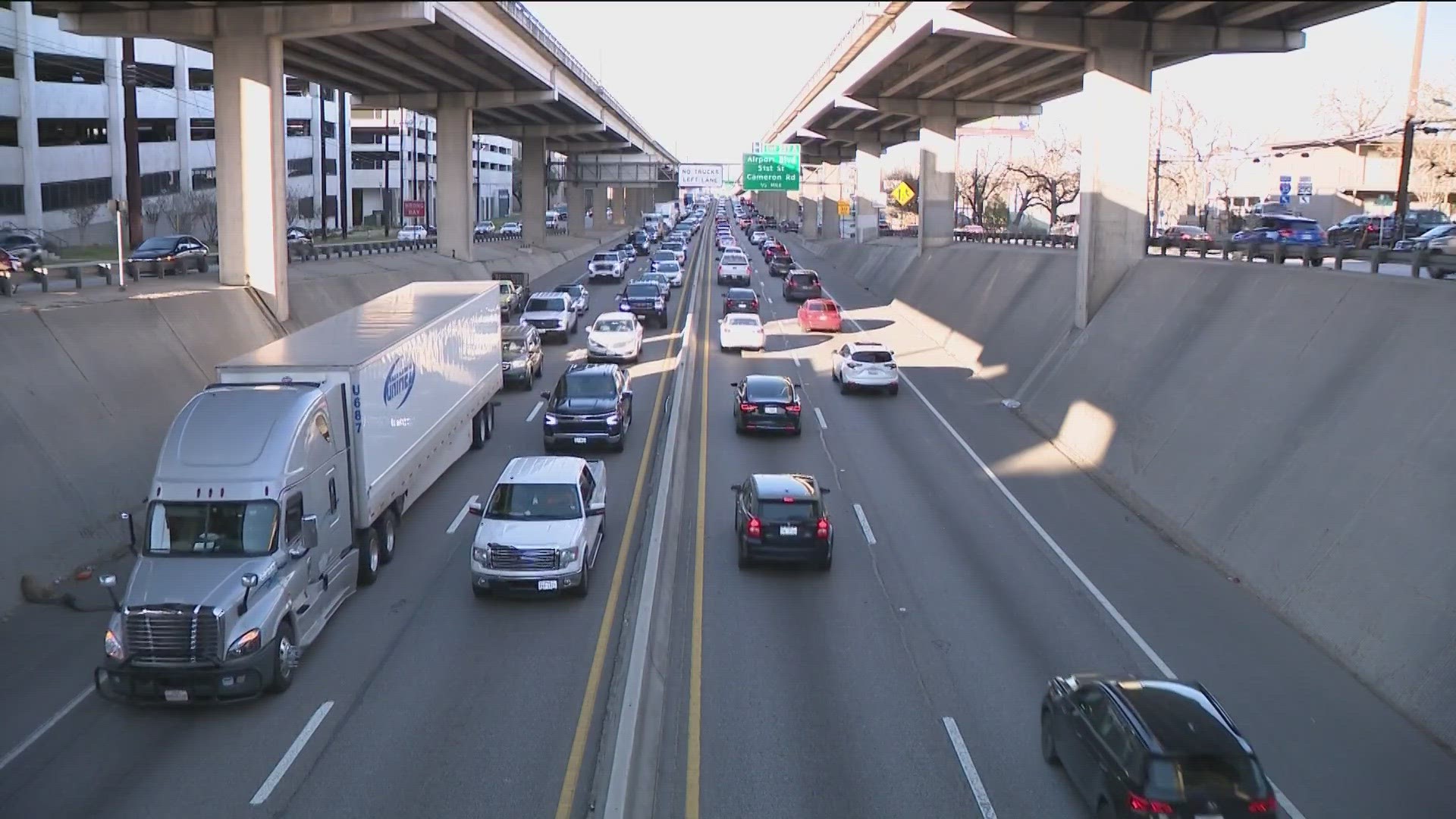AUSTIN, Texas — On Tuesday, the City of Austin provided a 2-year update on Vision Zero, its initiative to help eliminate traffic-related injuries and deaths across Austin.
Joel Meyer with Vision Zero said there are people in Austin who are unfamiliar with the way the roads work. While that's a big reason why serious injuries and deaths from crashes are high, it also comes down to the way the streets were historically designed.
Meyer said Austin roads were designed for really high speeds, and while the team works to implement changes, it's going to take a while to see significant results.
The good news is that since revamping certain intersections of City-owned streets, Vision Zero has seen good results. The ones that need some work are the State-owned roads, according to Meyer.
"We're seeing the biggest increase in our serious injuries and fatalities are on those higher speed highways and those major arterial roadways," Meyer said. "So, you know, roadways like Palmer Lane or North Lamar or MLK South Congress."
Other contributing factors include the increasingly large size of cars, uptick in high-risk behaviors like speeding and impaired driving and reduced traffic enforcement.
"It's definitely a trend that we're monitoring, and we're trying to figure out solutions," Meyer said. "We can [work to] kind of slow down on cars, especially when they're interacting with pedestrians and cyclists."
According to the City's progress report for Vision Zero, in 2021, 42 pedestrians were killed. In 2022 it was 48 pedestrians that died. This is compared the the previous five-year average of 30 per year.
The report detailed about safety initiatives led by the Austin Transportation and Public Works Department (TPW) in 2021 and 2022.
Below are a few takeaways from the report:
- Traffic deaths resulted in over 8,000 years of life lost, which would have been the additional years a person would have lived if they didn't die prematurely
- Pedestrian deaths rose in 2021 and 2022 compared to the previous 5-year average of 30 per year
- Austin's Black population accounted for 15% of people seriously injured or killed in crashes
- "Crashes were responsible for more than $6.8 billion in economic losses related to medical and administrative expenses, motor vehicle damage, employers' uninsured costs, wage and productivity losses and lost quality of life," according to the report
Through Vision Zero, there has been a focus on redesigning streets to help make roadways safer. Below is a look at some of the work that was completed in 2021 and 2022:
- Seven major intersection safety projects and another 25 intersections underwent construction, design or scoping
- More than 40 locations had low-cost, high-impact systemic projects installed
- More than 30 locations with recent traffic fatalities have undergone rapid response safety interventions
- Nearly 50 arterial streets and hundreds of residential streets had speed limits lowered
- Over $27 million in federal funds to help increase the scale and scope of work
Over the next two years, TPW plans to focus on expanding its safety engineering projects to decrease the risk of severe crashes. Since the start of 2023, 26 intersections are going through various stages of scoping or design.
The department will also be looking at systemic countermeasures such as left-turning calming treatments, retroreflective backplates and signal timing changes. Lastly, there are six corridors and more than a dozen intersections that will be part of street lighting projects.

